This feels like a question that no-one should need to answer. Much as professional racing cars are tweaked and cossetted to produce the highest performance, and engineering innovations from the R&D spent on this eventually trickle down into what we drive day to day, it seems logical that the same should hold true of pro audio and home audio.
Or should it? Consider the engineering and user requirements for a professional audio power amplifier.
In no particular order, let’s start with “electrical durability”. This slightly imprecise sounding term is deliberate – it should encompass the following aspects:
- Ability to deliver the specified power into the specified load and be capable of doing so for a period of time that is sonically useful (so not for half a millisecond for marketing purposes)
- Ability to tolerate loads or operating conditions outside of specification even if power levels are reduced – protection from short circuited outputs, extremes of temperature or fluctuations in mains voltage
Next up comes “mechanical durability”. This one is a little more straightforward. Will the amplifier survive a “life on the road”? Has it been designed to be easily serviceable and can it withstand the physical abuse that comes with being hauled in and out of trucks and bounced about on ramps, and maybe even the odd drop off a fork-lift?
And perhaps not finally, “audio performance”. This is another slightly murky term. Meeting published specifications for power output is also part of the “electrical durability” but there are also the signal integrity parameters to consider – noise and distortion, intermodulation and crosstalk, phase accuracy and impulse response (time smearing, if you like). Meeting these specifications doesn’t give the whole story – it still won’t completely describe the ability of the amplifier to reproduce music – not just sine wave bursts and clicks.
As someone who has an interest in both the professional and the hi-fi worlds, working in one and enthusiastically engaging in the other, the listener as opposed to the engineer in me would suggest that the requirements for a hi-fi amplifier might be different to those above.
Sure, we want our hi-fi power amplifier to be mechanically durable, but we are willing to forego the need for it to be dropped from 5 feet onto concrete (I am thinking of valve/tube amps here!) in favour of something perhaps less industrial in appearance.
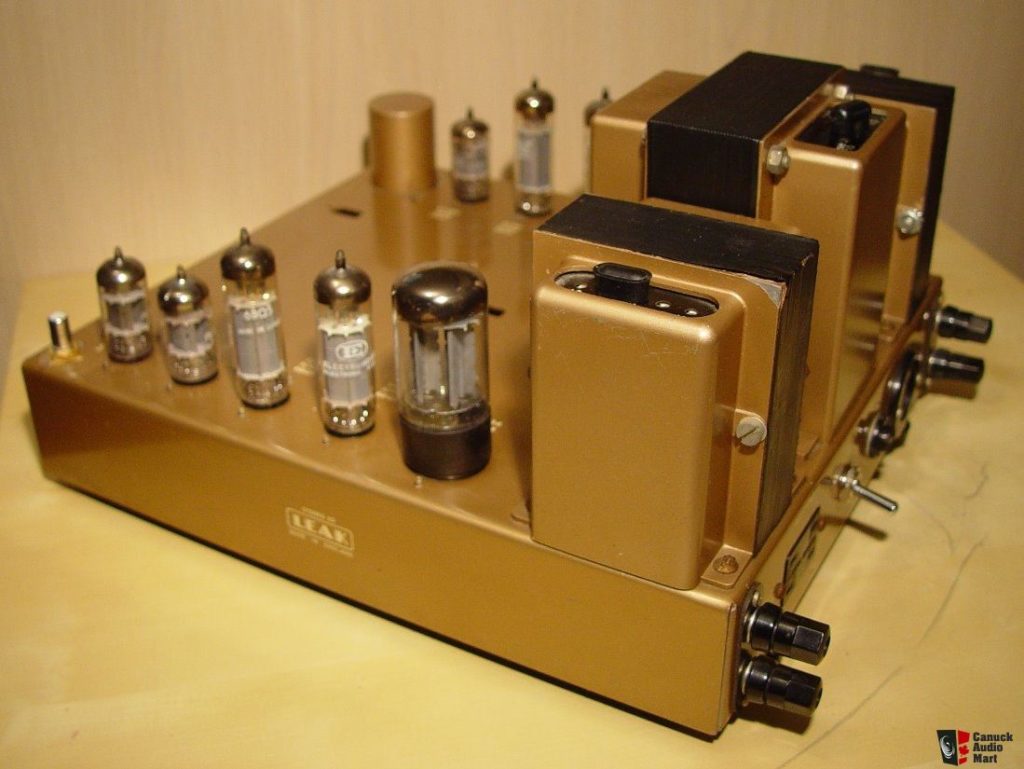
Exposed glowing valves do not mix well with being dropped. (image credit canuck audio mart)
We might be be OK with something that can’t run at full power into a 2 Ohm load, for something that doesn’t sound like a jet engine when it’s doing that, admirable as this endurance might be. In all honesty, how often is a hi-fi power amplifier ever driven even close to its rated output?
And lastly, and really most importantly – “audio performance”. More accurately described I would hope as “what does it actually sound like?”! A true seeker of high fidelity performance should be focussing on the quality of the audio above all. Does it make you appreciate the music more? Does it suddenly encourage you to want to play another tune – and hear things you never noticed before? Does it give you a bit of a shiver when you revisit old music and hear new things? All that.
I have good and bad news on that front, from my point of view…
Let’s get the bad news and a little backstory out of the way. I love my hi-fi. It’s been with me in a multitude of forms since I was about 15. Its complexity and quality have waxed and waned over the years, though Quad and Leak valve amps, Sugden and NAD, dalliances with Japanese brands such as Rotel and Yamaha, and even some dark horses such as Grundig (my favourite bargain CD transport!). I’ve still got a soft spot for this superb CD player from back in the day – the B&O CDX 2 (well, I actually still have one and it’s going strong!)
I would never suggest my system is in the top echelons of the world of hi-fi, and in reality it has all been based around my record deck from day one, which is an immaculate Thorens TD124 MkII with an SME 2009 arm and a Goldring 2300 MM cartridge. My current amp is a recently recapped Cyrus 3i and I play this through Mission 751s on Gale short stands. Digital sources are a Marantz 6005 streamer which also is used for DAC duties for my Grundig transport.
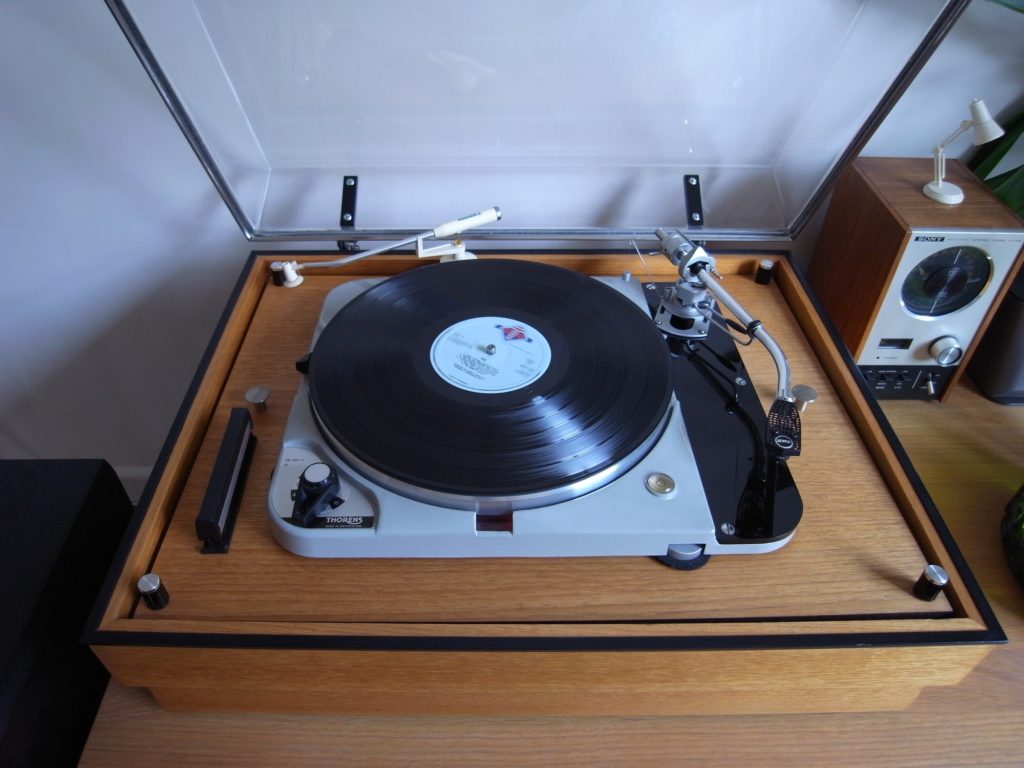
The heart of the system – the gorgeous TD124 MkII with SME 3009 and Goldring 2300 cart all cared for in an amazing suspended SME plinth.
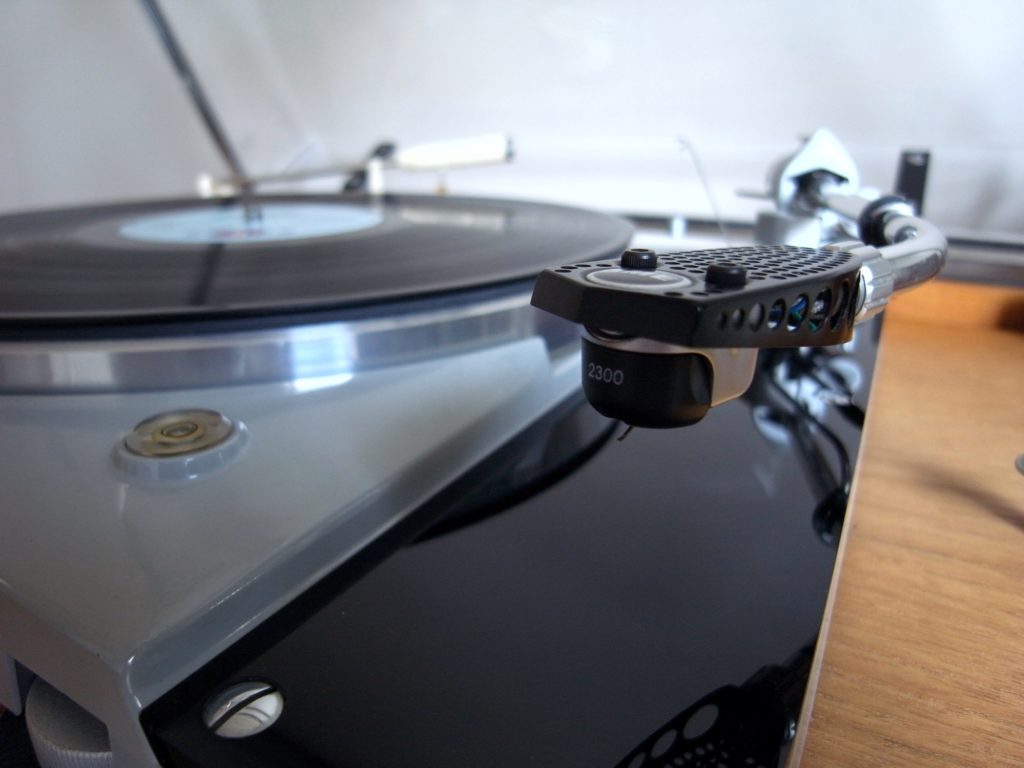
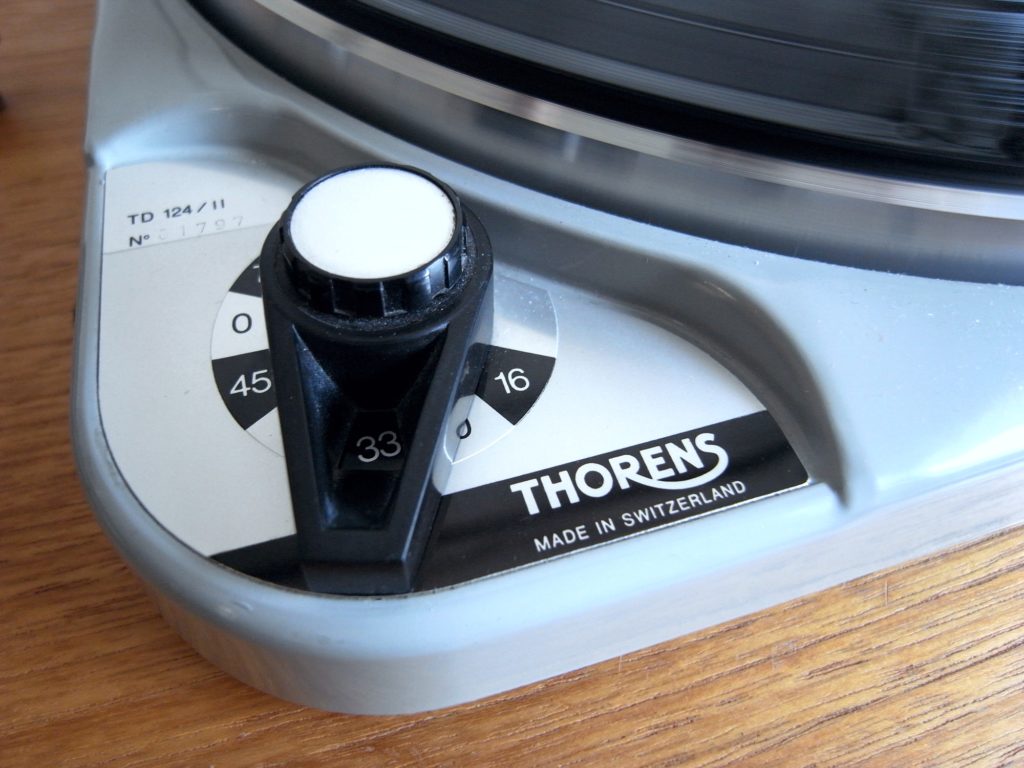
I also have a magnificent Akai GX-95 MkII tape deck which, to be fair, doesn’t see much action these days but I can’t bear to part with it!
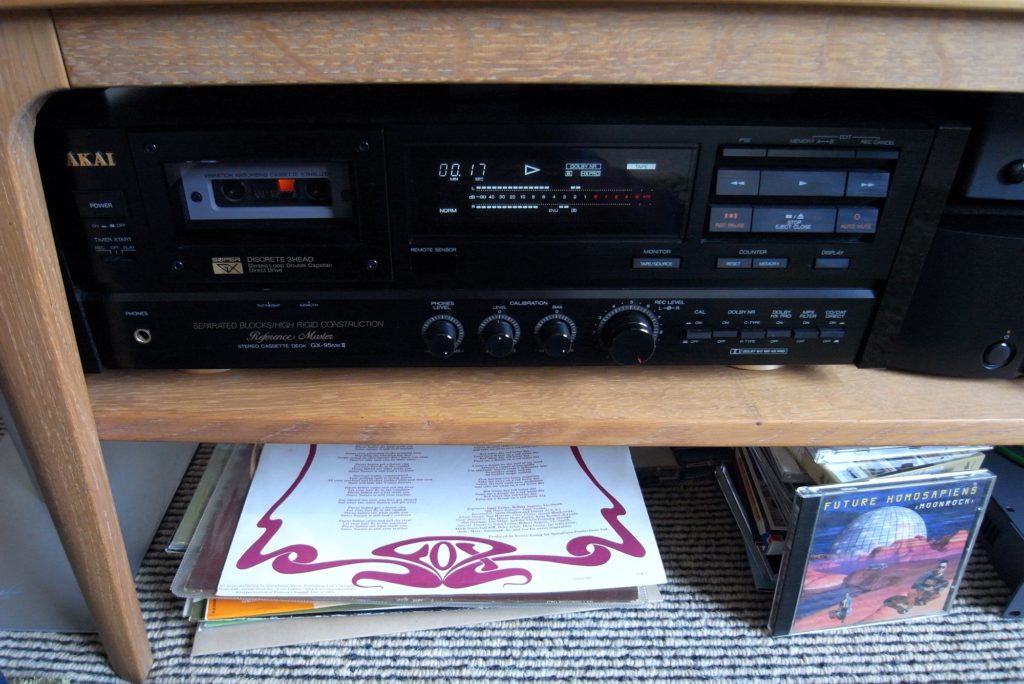
My beast of a tape deck – the Akai GX-95ii.
I am not a very serious radio listener so the tuner isn’t actually the very cool Sony one you might have seen in the photos – it’s the Revo DAB one next to it! I would have used the Marantz to stream radio but waiting 25 seconds to tune in is just too much of a pain…
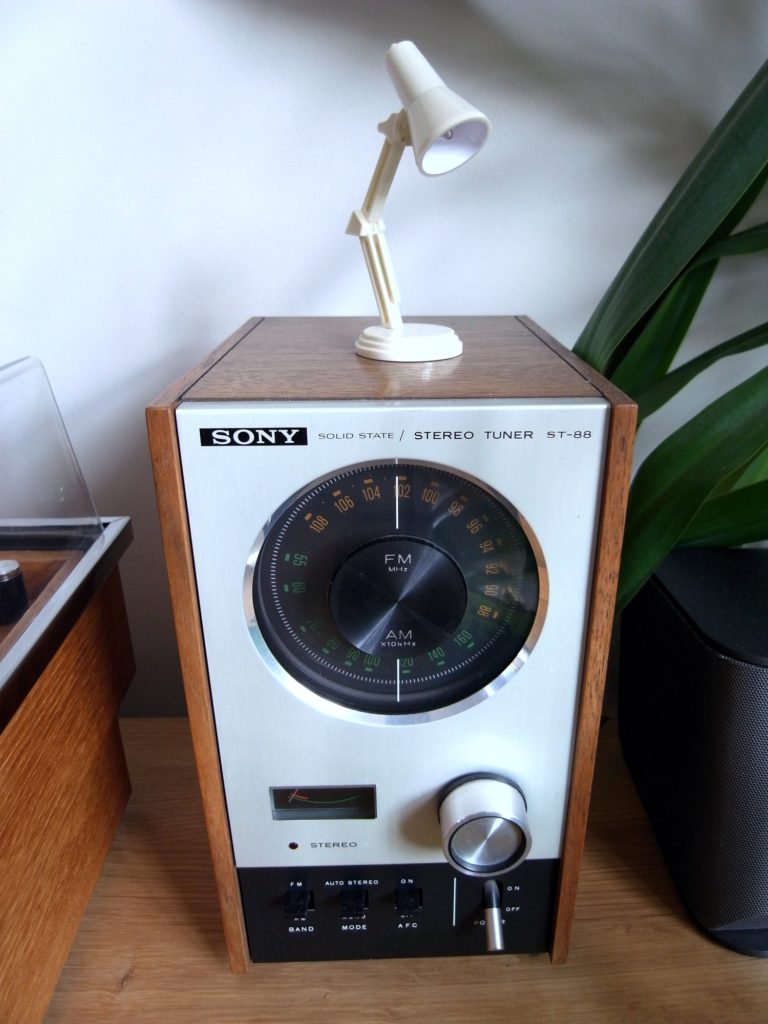
Retro cool Sony ST-88 analogue – used to be my only tuner, now more a style icon I can’t part with…
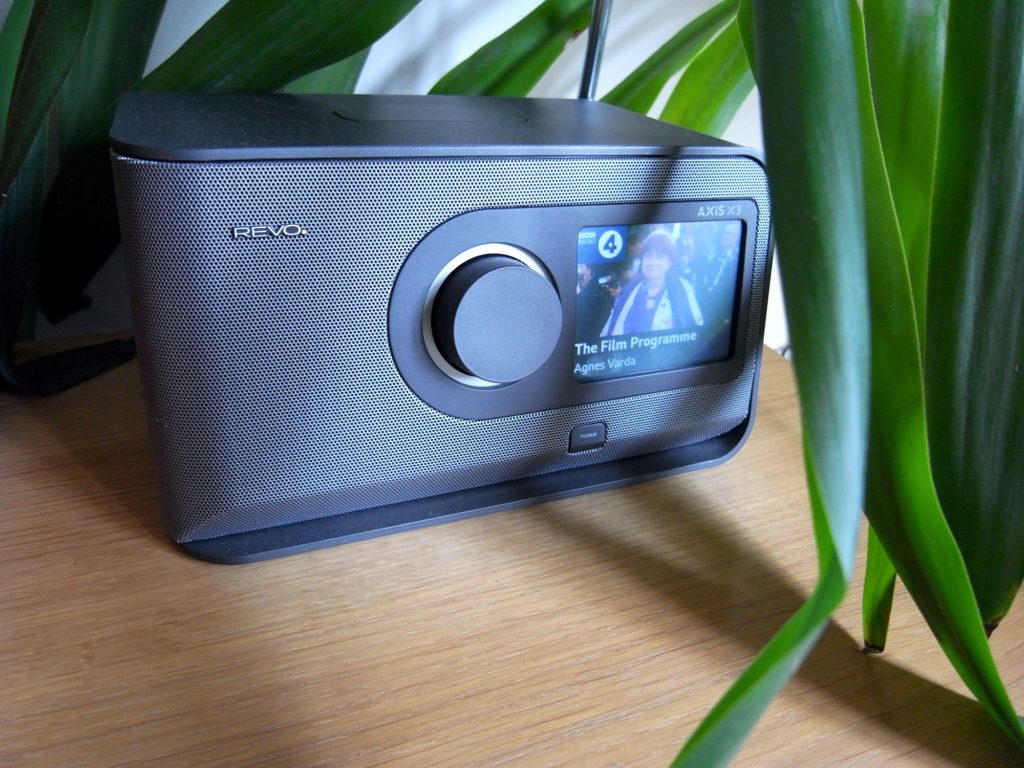
My Revo DAB and Internet Radio serves up the broadcast chops with a great touch interface and smooth sound.
So, the bad news part of my story. About two months ago, my Cyrus amplifier began misbehaving. If you are unfamiliar with them, the Cyrus 3 is a British amp, which was first sold quite a few years ago and was the companies first foray into remote control and multi-part systems, beyond basic pre-power amp configurations. Cyrus developed a reputation for offering very adaptable components with a variety of upgrade paths that included the ability to add an external power supply to the integrated amp to power the output stages, leaving the already substantial linear supply just for the pre-amp.
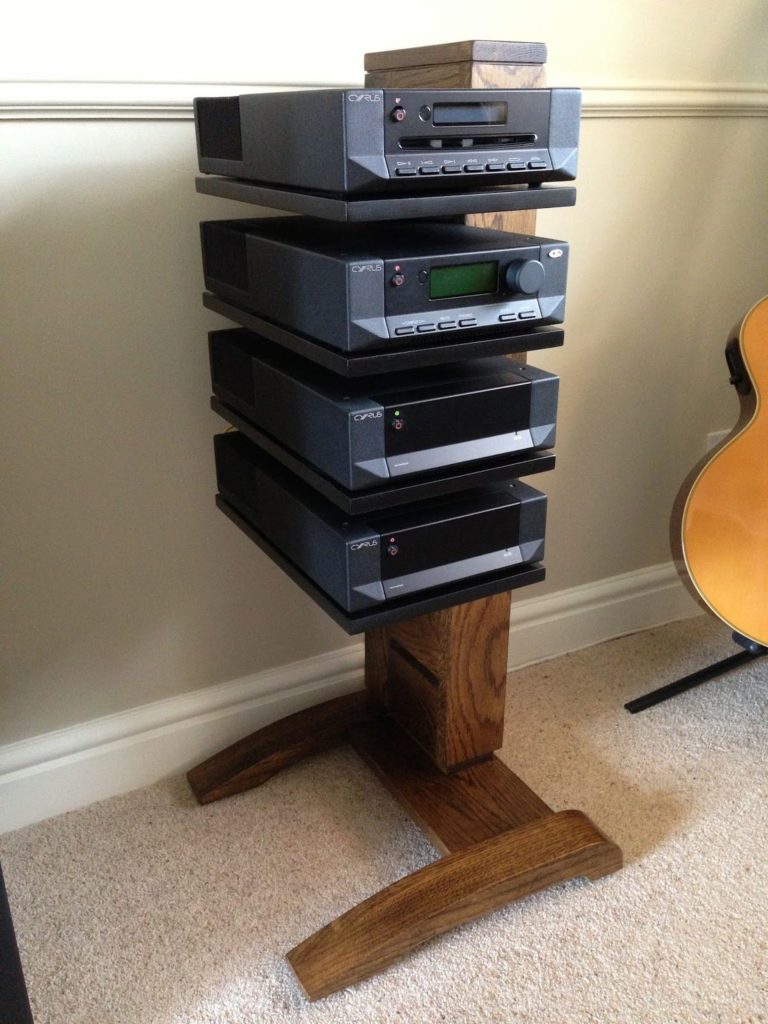
Cyrus amplification with external PSUs for both the amp and the CD player in this example…visually a very striking system and sonically superb.
So my Cyrus 3 was the first one with soft switched inputs, a “digital” volume control and a remote. And of course then the need for a microprocessor to control this. Herein lay the problem. Something had started to upset the microprocessor so on occasion the amp would power up on its own, refuse to power up, or the volume control would not work properly. This got worse to the point of several inputs seemingly being selected simultaneously, and then not at all with accompanying clicks and pops and BANGS, threatening the life of my speakers. Eventually this all culminated in a dead amp – buzzing quietly, all lights on, occasional pops scaring my woofers. The end. Being an electronics engineer, I was of course not willing to admit that my amplifier was finished, especially having witnessed tis slow demise and knowing it had not suffered any catastrophic failure – the “amplifier” was willing, just the brains had died.
My previous dealing with Cyrus over the years had been both helpful and fruitful – spares for older Cyrus amps dispatched quickly, and quick responses when asking for diagrams. This time however, not so much – it seems like the Cyrus 3 was an experiment not to be repeated! No schematics could be found, and they won’t even consider servicing the amplifiers themselves, despite covering those that came before and all that came after – it would appear the “3” is a fly in the ointment. Having managed to resurrect the microprocessor board myself, I still couldn’t get it successfully back in charge of everything else, so I felt the time was right to move on.
I say “move on” – I sort of “moved sideways”…luck would have it that an updated version of the amplifier I loved was for sale on eBay and had been fully recapped and serviced (which I guess wouldn’t need recourse to schematics if it wasn’t faulty!). It was too good a price to pass up given that the service alone was about 50% of this and this should see it right for a further decent period of time.
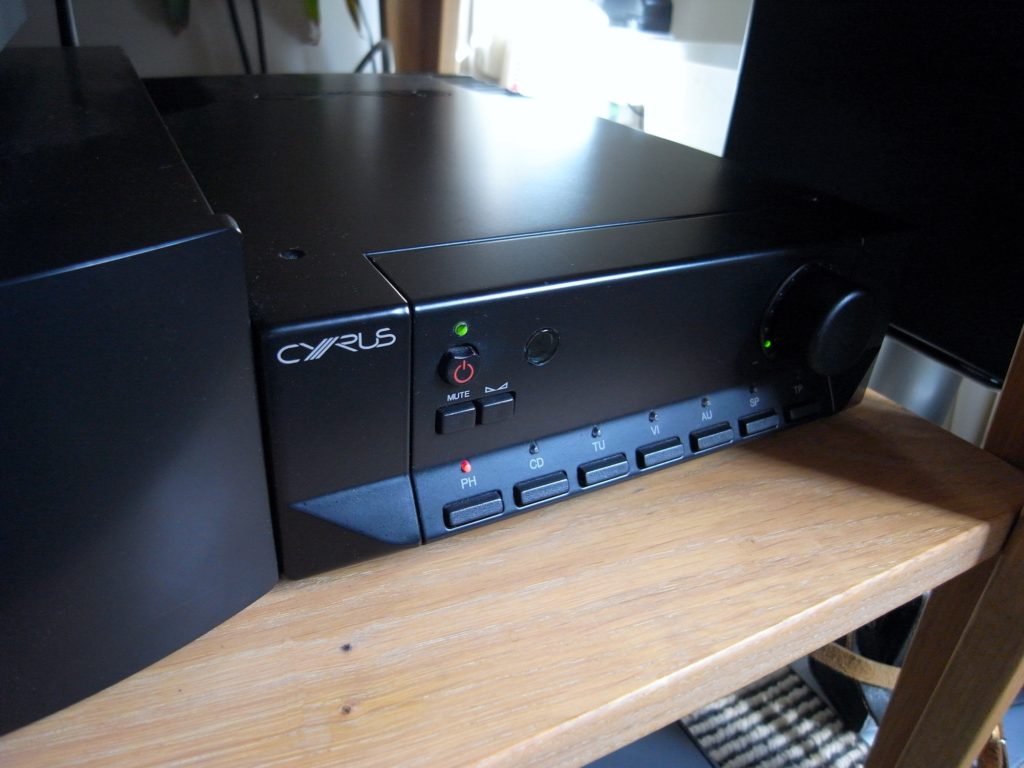
The replacement Cyrus 3i in all its shoebox shaped understated glory.
Upon arrival of my new old amplifier, I was pleased to see that some lessons had been learned in the process of developing this tweaked “i” version. The most notable was that the soft switching on the inputs had been replaced with “proper” relays and there was an additional input now for line sources. The phono stage remained, as did the pre-outs which I had never investigated.
The power amp was still a class AB design and the power supply was still linear and as big as pleasingly generous as ever. I don’t know if the power output had been increased, but it was going to be in the region of 50-70W/Ch.
I dropped it back into place and started to listen. Ostensibly, everything was as expected. Our memory of what things actually sound like is very fickle and I had been without the amp for quite some time. Not having my original amp in a working state to compare against meant that my recollection of how it sounded versus this “i” (for “improved”…?) version was always going to be difficult. My initial listening tests did not exactly reinforce the “i” for “improved”.
Nothing was “wrong” as such. Everything pointed to a better amplifier – it was certainly quieter, especially the phono stage, and the relay switching put an end to all pops and thumps. Clarity was great and everything seemed better controlled than I remembered. Was most of this down to the recapping procedure though? The power supply would have most certainly benefitted from new reservoir caps and a quieter phono stage might well have been a result of this too.
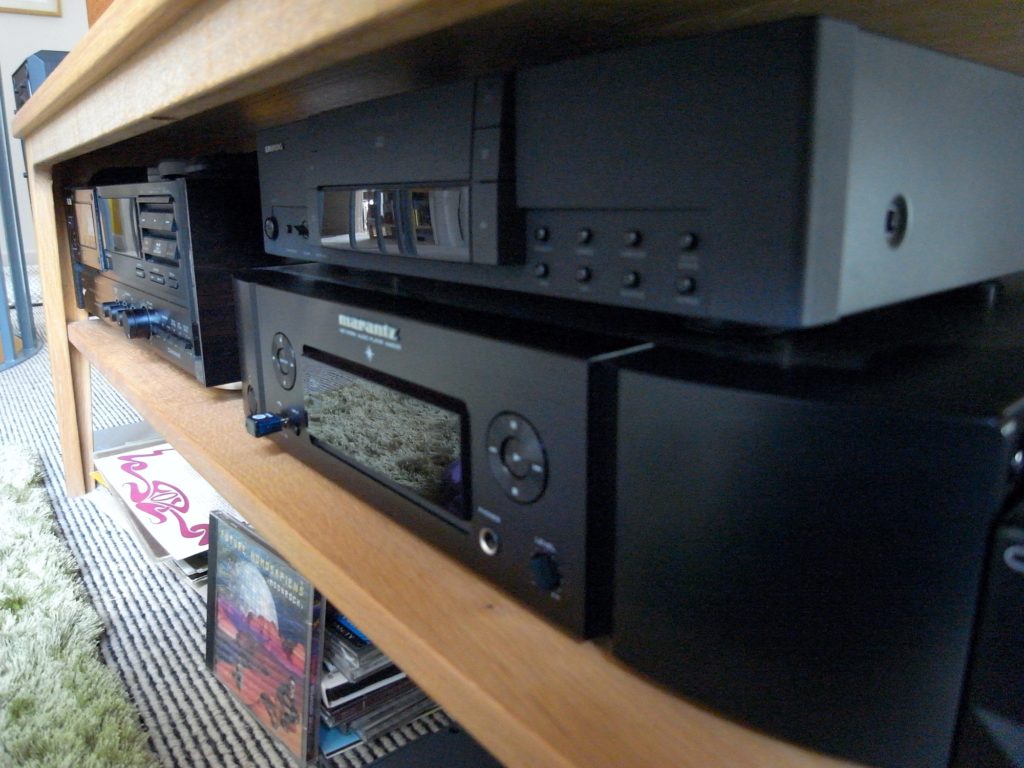
Streaming and DAC duties fall to the Marantz 6005.
However, something just wasn’t quite right to my ears. My lovely Missions, so familiar to me for their deep tuneful bass, and uncoloured mids, seemed to be lacking in any excitement. I could see them moving plenty when I turned things up and played some bass heavy tunes like John Grant, or Mura Masa, but the bottom end just wasn’t…there. I began to wonder if I had moved my speakers and caused a cancellation somehow, so began shifting them (and my position) about, but things just weren’t doing it for me.
Going back to analogue and some Joni Mitchell and Kate Bush impressed me more with some attack on drums I think had been lost as the old am deteriorated but that nagging feeling of missing depth was still there.
“Oh well,” I sighed. “Maybe it’s all in my head – it’s not likely they’ve made a worse amp. Maybe I’ve got used to woolly warm bass due to deregulation on the power supply.”
I didn’t actually think that second part – it was more like “Maybe I liked my crapper amp better.”
Anyway – it was far from crap – it still sounded great, just not quite as great as I fondly recalled.
In the scheme of things, we now had Coronavirus to deal with and working from home looming and so I put it out of my head.
Dragging all my kit from work to home, I remembered the pre-outs on the back of the new amp and had an idea. A sadistic idea, but one that would prove interesting and possibly fruitful. Why not try an amplifier built for “professional” use, freeing up the Cyrus integrated amp’s power supply to just run the pre-amp and see how it compares?
If you read the introduction, you’ll remember all the reasons cited that would maybe put you off the idea of using an amp designed for a rigorous life versus one deigned for a charmed life in a hifi rack – maybe not a focus on audio quality per se: maybe big ugly rack ears and noisy fans, maybe not as living room friendly as it could be.
I know that the MC2 Delta Series have been used in some very audio quality focused applications in the last couple of years – the kitting out of Air Studios in London across 5 different rooms, and the OEM rebadged versions for Quested (professional studio monitors) and Dynaudio (same again). Multi-way high power studio monitors are one thing, quality aside, and separate control and machine rooms get round any noise concerns. What about for my house, my hi-fi?
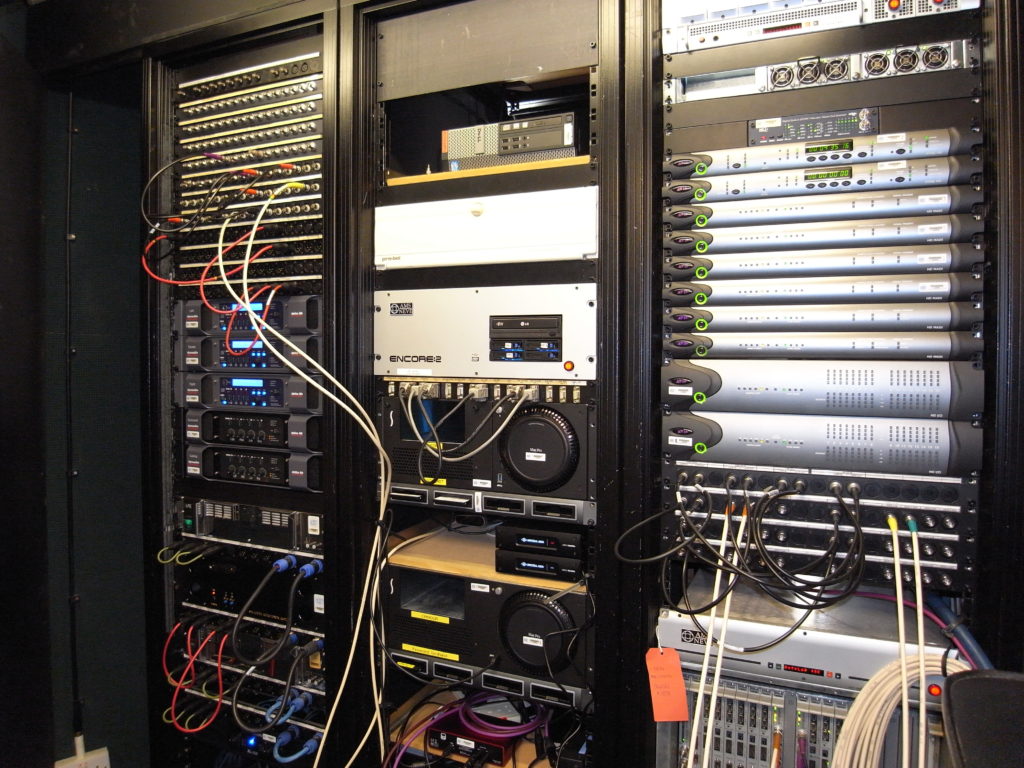
Studio 3’s machine room at Air Studios, London – 20 channels of Delta amps in the left hand rack (rebadged Dynaudio)
My thought turned to the smallest model – the Delta 20. Four channels in a pleasing thin 1U box. Low noise fan mode. Auto standby mode. All of this was looking good. So I packed one up and brought it home. Find out how it all went in part 2 of my journey back into hi-fi here…
Download a pdf of both parts of “Journeys in Hi-fi” for reading offline here.
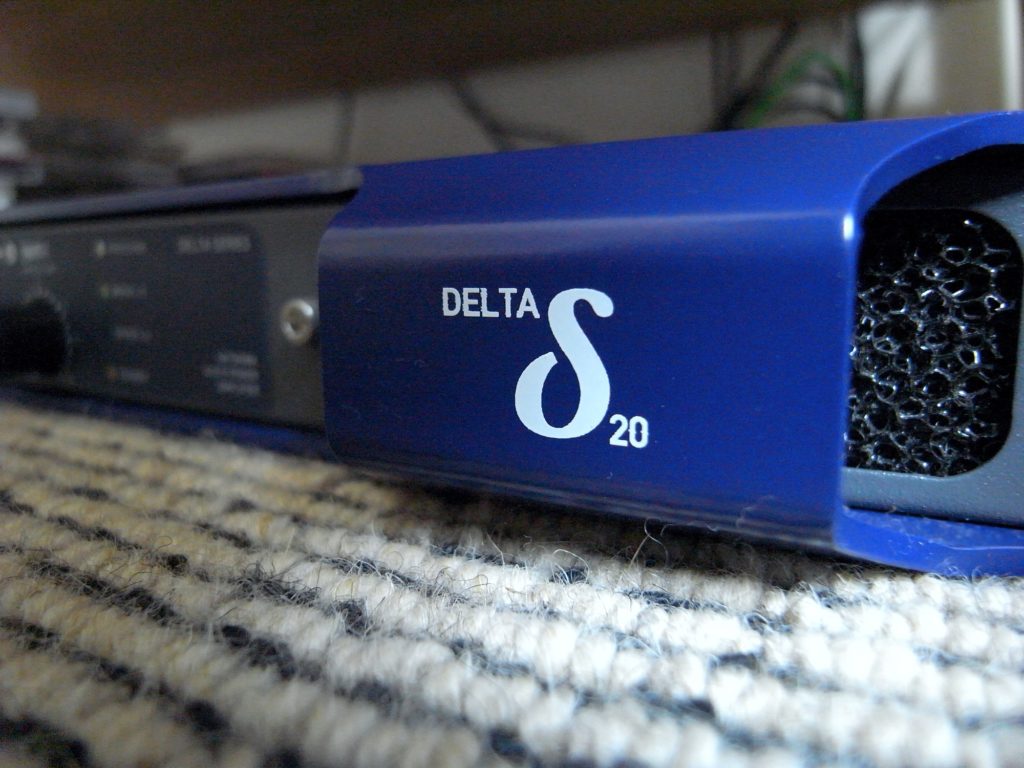
1U of amplifier goodness – May I introduce the Delta 20 to my carpet…


waring, it sounds like the MC2 Delta will fit the bill just fine. Years ago, I was using a Crown DC-300A. Talk about old! Next came a NAD 2200 that I regret selling to this day. Headroom to the stars and beyond. Today I’m using Yamaha HS 8’s with an HS 8 sub. I feed them computer line out and use a Cambridge Audio DacMagic 100. A really sweet little wonder box from your side of the pond. I’ll mix it up and use my iPod Classic through a Marantz HD-DAC1 that I virtually stole from a retailer on Reverb. For movie night in my den, I’ll slip on a pair of Sony MDR-7506’s from the Marantz for Netflix or Prime. Everything pulls double duty when it’s time to fire up the Rode RODECaster PRO and the assorted Rode mic’s, tube, and regular large-diaphragm condensers.
I saw your products used in the Funktion-One speaker stacks and read the specifications on driver sizes and amplification used. Most impressive utilization of state-of-the-art technology in building the world’s most advanced amplifiers being built to date. And from your synopsis of Hi-Fi and how it correlates with Pro Audio, I’ll be there on your side of any discussion. If it doesn’t sound right at the beginning, how do you expect to reproduce it true to life? From one low budget audiophile to a person with great taste in turntables etc.. Keep up the good Work From Home, and we will get through this together. Greeting from Southern California! Terry
Hey Terry – thanks so much for replying to the post! I always think there is a diminishing returns point reached (as with all things I guess) that is pretty ill defined in hi-fi gear. With pro-audio equipment destined for live use(as opposed to studio use), sorting the wheat form the chaff happened pretty quickly – gear either does the job or it fails. With hi-fi gear, there’s all the extra emphasis on the styling (and that’s fine – who wouldn’t want gear to look good as well as sound good) that can make it harder to decide what’s worth the money and what isn’t. There is such a vast proliferation of cool looking amps and speakers (as being the most popular components people want) that the only proof is in the listening, as it always should have been. That said, moving them into the living room to power your TV’s sound (I am genuinely surprised they even bother with in-built speakers at all these days) makes it desirable for them to fit in with a “shared space aesthetic” – esoteric and quirky designs are OK in your hi-fi rack, but you might not want everything to shout so loud in your lounge.
Getting back to diminishing returns, the point at which paying ten times as much isn’t going to yield a ten-fold increase in quality (whatever that might mean!) is harder to define than in most other industries. Simpler is more often than not, better, and simpler should equate to less expensive. I totally agree with F1’s philopsohy of getting it right from the outset, and so not having a suite of DSP hiding correcting EQ that is needed to fix the problems inherent in the speaker design. There’s also the fact that all this correction messing with the phase response has an adverse effect on time distortion of course, not to mention headroom if the EQ is in any way “severe”.
Trying the D20 out at home was an interesting exercise for me, as I have only done this one before with an older EV amplifier and the results were not anywhere close to being as cut and dried as this. As I will mention in the second part of the review, we’ve actually swapped out the MC1250 and MC750 amps that were our studio monitor driving system for Delta 20s in the past few months – reducing the racks from 7U of class AB and massive linear supplies to 3U of totally Class D and switching supplies. I never thought I would see (or hear!) the day when this was possible!
I hope you get a chance to audition the amps yourself some day soon and you must let me know your thoughts on what you hear – and hope you enjoy the second half of the article – hope to get it up on line on Friday.
Cheers for now,
Waring